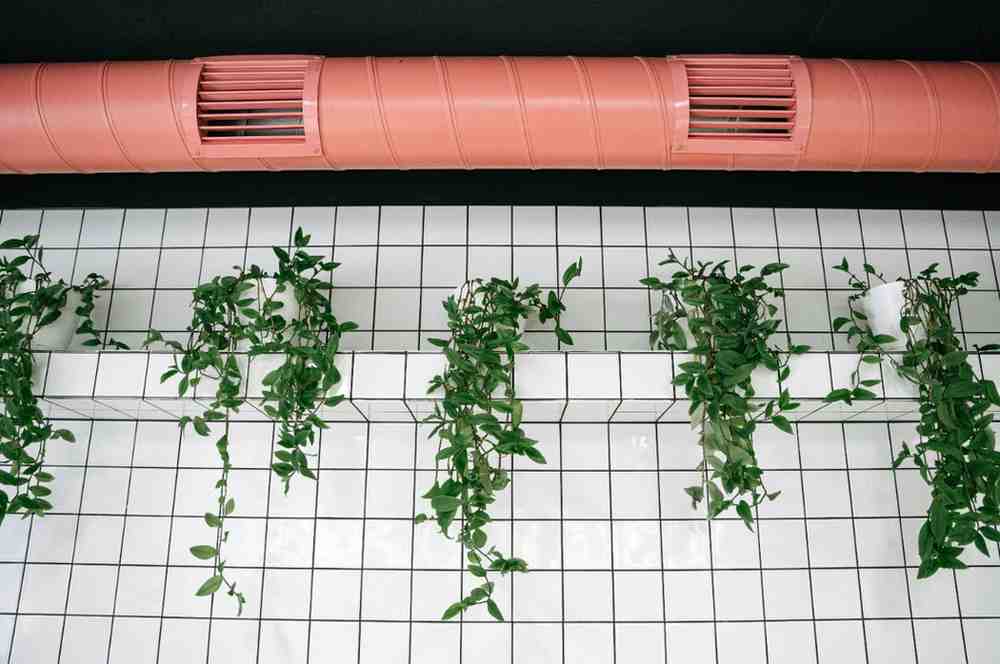Reconnecting with nature has recently become an appealing goal for a great many people in today’s fast and technology-oriented world. Indoor Phyto Habitat Design is one innovative way to introduce the quiet world of nature into your daily routine. The indoor gardening through this creative and functional approach enables you to convert your abode into a bustling microcosm (nature imitating indoor gardening), working as an ultra nutritious nitrogen air plant system, transforming your home ambiance into an aesthetically pleasing, congenial and functional living space.
In this guide you’ll explore the concept, benefits, and step by step process of creating personalized plant ecosystems designed to suit your home. From complete beginners to serious plant fanatics there’s something for you here.
What makes Indoor Phyto Habitat Design?
Indoor Phyto Habitat Design is more than superficially placing a few potted plants around your home. This is the art and science of developing a balanced, self sustainable micro ecosystem so that plants live well together, much the same as they do in the wild. With this method, our focus is on being compatible, functionable, and sustainable, setting us up for success with plants and with humans alike.
Key Features of Phyto Habitat Design:
- Most are used as mimics of natural ecosystems like rainforest, desert or wetland in the indoor.
- It groups plants that like the same amount for light, humidity and temperature.
- Such things as water features, natural lighting, or living walls, incorporate what we’ve called biophilic elements.
With Indoor Phyto Habitat Design, not only does your space become more beautiful but it’s also healthier and more peaceful, like the balancing and harmony of nature.
What Makes Indoor Phyto Habitat Design So Cool?
Creating an indoor phyto habitat is far more than an aesthetic consideration. This approach offers a holistic solution to many challenges of modern indoor living:
Improved Air Quality: Air plants are naturally good for the air. Known to absorb carbon dioxide (CO2) and release oxygen while filtering out toxins such as formaldehyde and benzene, they are sparsely studied as a possible solution to the problem.
Stress Reduction: Less is known about the far more appealing indoor practice of putting plants in your office.
Enhanced Focus and Productivity: It is generally known that a green environment is linked with increased creativity, concentration and efficiency.
Sustainability: When you create a self sustaining ecosystem, you reduce chemical fertilizers, water sapping over watering and waste.
Aesthetic Appeal: A perfect specimen of a phyto habitat is a beautiful centerpiece of your home, paying a natural soothing note to your decor.
Indoor Phyto Habitat Design — The Science Behind.
Basic gardening isn’t enough to create a phyto habitat. This has to do with understanding how the environment serves plants and how they serve plants. Here are some scientific principles that guide this practice:
Symbiosis: Certain plants — and other creatures — are capable of forming beneficial relationships with one another. So, nitrogen fixing plants, such as legumes, sprinkle their soil with nutrients that help other plants.
Microclimates: Configuring plants in localized microclimates — where they grow together based on similar needs — allows them to thrive, while decreasing the amount of work you need to maintain them.
Natural Succession: Ecosystems are evolved by time in nature. Replicating this is as easy as allowing plants to adjust and grow together in stages by introducing them at a time.
5 Simple Ways to Grow a Phyto habitat Indoors
1. Assess Your Space
Before selecting plants, evaluate your home’s conditions:
- Light Availability: Find places that receive direct sunlight, half sun or half shade, and low light.
- Humidity Levels: Tropical plants prefer bathrooms and kitchens that are more humid.
- Temperature Stability: Do not place plants near drafts, vents, heating systems or any other condition that may change the plants environment.
2. Choose Compatible Plants
Interplant with such groups of plants as have similar care requirements. Here are some examples:
- Tropical Ecosystem: If you like a lush, rainforest vibe then use ferns, philodendrons, and orchids.
- Desert Habitat: Place cacti, succulents, and aloe together for an arid, no maintenance arrangement.
- Aquatic Environment: Pair fish tank or water feature with a fish tank or a water feature and you have an almost dynamic hybrid ecosystem.
3. Mimic Natural Layers
Just as in nature, layering plants adds depth and functionality:
- Canopy Layer: Fiddle leaf figs are big plants that give shade for smaller plants below it.
- Understory: Peace lilies like plants in the calatheas variety like plants that are used as a nice object in the canopy.
- Ground Cover: The base layer is formed by mosses, creeping figs or small ferns.
4. Incorporate Biophilic Design
Enhance your phyto habitat with natural elements:
- Water Features: Small fountains or aquariums give you a soothing moment with a dynamic look.
- Natural Materials: The greenery will complement bamboo, wood or stone planters.
- Lighting: Full spectrum grow lights will help recreate natural light in areas with little sunlight.
5. Maintain Your Phyto Habitat
A well-designed phyto habitat requires regular care:
- Fertilize plants and according to their specific need for water.
- Trim away and turn over plants to have even growth.
- Monitor for pests and disease that would keep your ecosystem healthy.
Challenges in common and how to overcome
Overwatering or Underwatering
Solution: Self watering pots or moist sensors will be used to keep woody plants at their optimal hydration.
Pest Infestations
Solution: Use organic pest control sprays or introduce natural predators; such as ladybugs.
Plant Incompatibility
Solution: If grouping of plants, then research which plants are compatible and what they require in plant care.
Unique Bio habitats – Creative Ideas
1. Living Walls
Vertical gardens are an amazing way to increase space and feature a lush green in your home.
2. Tabletop Terrariums
These miniature ecosystems are perfect for small apartments—in fact, they can be both decorative and functional.
3. Hanging Gardens
To provide a space saving effect, suspend trailing plants such as pothos or string of pearls.
4. Multi-Functional Ecosystems
An essential bone of the aesthetic is a phyto habitat which is also useful as a practical element; a herb garden for cooking or air-purifying plants for your work space.
Indoor Phyto Habitat Design: Advanced Techniques
Smart Gardening Technology
Automate lighting, watering and monitoring your phyto habitat using smart devices.
Bioluminescent Plants
Learn about how we might want bioengineered glowing plants to fit in with your ecosystem.
Eco-Friendly Practices
Go organic in the pots you use, the soils you choose and your watering system.
Conclusion
Indoor Phyto Habitat Design isn’t a ‘trend’ in gardening; it’s a way of life where nature’s beauty, balance and benefits are brought into your home. A personal plant ecosystem will help you create your own sanctuary of growing in your living spaces!
End Note
The indoor phyto habitat journeying whether it’s designating a lush rainforest corner or minimalist desert garden is creative, learning and connecting with nature. Work small, do tests, and let your home become a colorful, natural haven.
Indoor Phyto Habitat Design FAQs
Indoor Phyto Habitat Design is the main question.
Indoor Phyto Habitat Design is the design of the natural plant ecosystem in indoor space by imitating nature.
What are the best plants for a phyto habitat?
It depends on what you’re going for, but plants like ferns, succulents, orchids, mosses … are perfect.
What do I do to reliably maintain an indoor phyto habitat?
Monitoring for light, humidity, pests, and the other basic elements help you maintain a healthy phyto habitat.
Is it possible to create a phyto habitat in a small space?
If you ask, yes, terrariums, vertical gardens, hanging plants, etc., are small spaces, small space terrariums, vertical gardening, and hanging plants.
Why do we need a phyto habitat?
Air quality, stress reduction, productivity enhancement and improving home aesthetics are all benefits of Phytohabitats.
Can Indoor Phyto Habitat Design be done by beginners?
It’s a yes – a great beginning to start with simple ecosystems such as desert gardens or terrarium.



